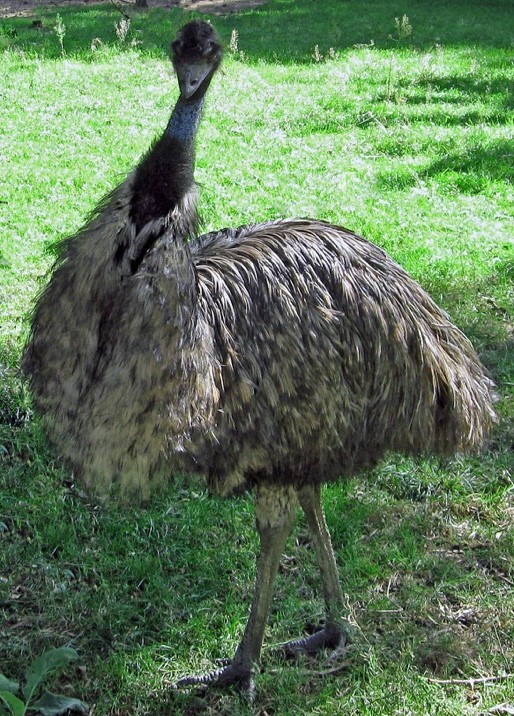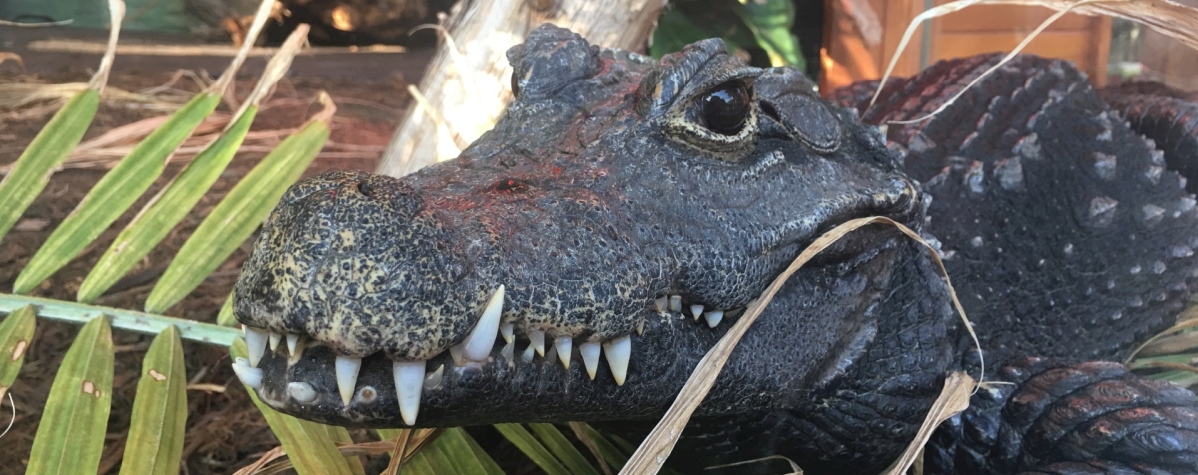Emu
Scientific Classification 
| Species |
Dromaius novaehollandae |
| Kingdom | Animalia |
| Phylum | Chordata |
| Class | Aves |
| Order | Struthioniformes |
| Family | Casuariidae |
| IUCN Status | Least Concern |
Appearance and lifespan
The Emu is the largest bird native to Australia and is the second largest bird in existence, with the Ostrich being the largest. It has a shaggy, soft-feathered coat of brown-grey feathers with blue to black skin on its neck and face.
The Emu has a long neck and long legs with three toes on each foot and can reach running speeds of 50 km/h (31 mph). It is a flightless bird whose small wings, when fanned, help it to keep cool in hot weather.
The Emu can reach a height of 2m (6.5 ft) and can weigh up to 70 kg (154 lb). The average Emu’s lifespan is 25 to 28 years in the wild but it is common for them to live much longer in captivity.
Male and female Emus have different voices. The male makes guttural cries while the female has a resonant booming call made from a large air sac attached to windpipes in her chest.
Behavior and reproduction
The Emu’s breeding season is from May to June. The male is the principal caregiver for the young, even building the nest for the eggs and incubating them. Females lay between 7 and 12 thick-shelled, dark green eggs which can weigh up to 1 kg (2.2 lb).
The male emu will stay on the nest for the incubation period which lasts between 58 and 61 days, only getting up to rotate the eggs every few hours. In those eight weeks, he will lose 1/3 of his weight and will survive only on stored body fat and any dew that can be reached from his position on the nest. The female shares in the rearing of the young and defends the nesting territory during the incubation period.
After hatching, the chicks can stand and leave the nest within a few hours and are fully grown at 12 to 14 months. The chicks are 25 cm tall (10 in) and have distinct tan brown coloured stripe down their back which provides camouflage. The stripe fades after approximately 3 months. The male Emu stays with the chicks for 18 months, teaching and defending them. Chicks become sexually mature at 2 years of age.
Ecology and conservation
Emu's live in most habitats throughout mainland Australia but are usually found in areas of savanna, woodland, brush land and forests. They have a large range of an estimated 1 million to 10 million km2 with approximately 630,000 to 730,000 individuals.
This bird eats a variety of native and introduced vegetation as well as insects, seeds, grasses, leaves and fruit when it is available in the spring. They serve as important agents for dispersing seeds and greatly benefit the diversity of flora in Australia. They are nomadic animals and may be seen traveling in enormous flocks, moving towards the same food or water source.
Food at the Zoo
The Emu’s zoo diet includes Emu grower, romaine lettuce and oyster shell. They are also fed large grit which makes its way to the bird’s gizzard and helps the bird to grind its food up for digestion. Like with all birds, grit helps the Emu to grind up the food that enters its stomach.
Threats
Natural enemies of Emus are dingoes and eagles who predate on the young. Other dangers to Emu populations include human threats due to killing for meat, oil, eggs and to protect crops needed for livestock.
Did you know?
- The eggs are edible and are the equivalent of approximately 10 chicken eggs.
- It is believed that the emu is a survivor of prehistoric times and dates back some 80 million years roaming the outback of Australia.
- The feathers on the emu are unique in the fact that there are two feathers to a single quill.
Adopt an emu
Become a part of the the Riverview Park and Zoo family through our Adopt an Animal Program!


